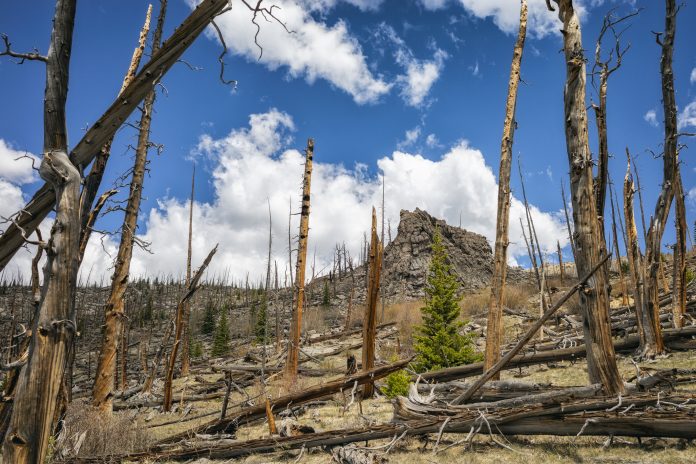Researchers from UC Davis have developed the ability to forecast the resilience of certain trees, revealing they can predict which will thrive best even when experiencing forest drought
This new method links precipitation with tree growth. The team hope the method can help decisions on where best to put forest resources as climate change alters snow and rainfall patterns.
Calculating chances of tree death
Jessie Au, a postdoctoral scholar in the Department of Plant Sciences. She works with Troy Magney, an associate professor in the department. Jessie explained, “If a forest is doing OK, but in the future, we know it’s likely to get only half the average rainfall it used to get, we can calculate the likelihood it will die,”
The tool Jessie and the team created is designed to assist individuals overseeing forests or utilising them as carbon storage to combat climate warnings.
As companies increasingly invest in forest lands to balance their greenhouse gas emissions, knowing where forest reliance is strongest is becoming more and more crucial
The importance of water storage
Forests breathe in carbon dioxide from our air and turn the carbon into food, storing it in their trunks, roots and leaves.
To absorb the airborne carbon, trees need a continued source of water. Insufficient water availability prompts them to exist on their reservoirs of stored carbon initially – releasing further carbon into our environment.
Like malnourished individuals relying on body fat initially, followed by muscle consumption, trees ultimately approach a similar critical juncture.
Either the return of rainfall enables trees to rejuvenate and resume food production, or prolonged drought leads to the forest’s demise due to starvation.
Jessie and her team studied a forest devastated by drought in California’s southern Sierra Nevada. The aftermath of the unprecedented drought in. 2012 – 2015 meant millions of trees died. Au’s team linked changes in precipitation during that period to life processes inside the trees.
They also revealed the time delay between the onset of drought-induced stress and the trees’ subsequent reactions.
Observing ongoing decline in real-time
In their research, Jessie’s team examined rainfall, soil moisture, and temperature in the forest while also assessing the trees’ carbon dioxide absorption.
Employing a novel approach known as CARDAMOM, they connected this data to determine the amount of carbon trees stored in their structures like wood, roots, and leaves. They also monitored the reduction of these reserves as the drought persisted.
When the drought began in 2012, the researchers observed that trees seemed unaffected for a few years as they relied on their reserves.
By 2015, a turning point was reached: the trees had depleted their reserves, and 80% of the forest’s trees were no longer viable. They were unable to transform carbon dioxide into sustenance.
“With this new methodology, we can now link drought to tree death later on, and we can assign a number to that risk,”
As Jessie and others continue to build on CARDAMOM, it could offer even more information about what is happening inside trees during drought and other stresses, leading to predictions on how forests will cope with future droughts.











